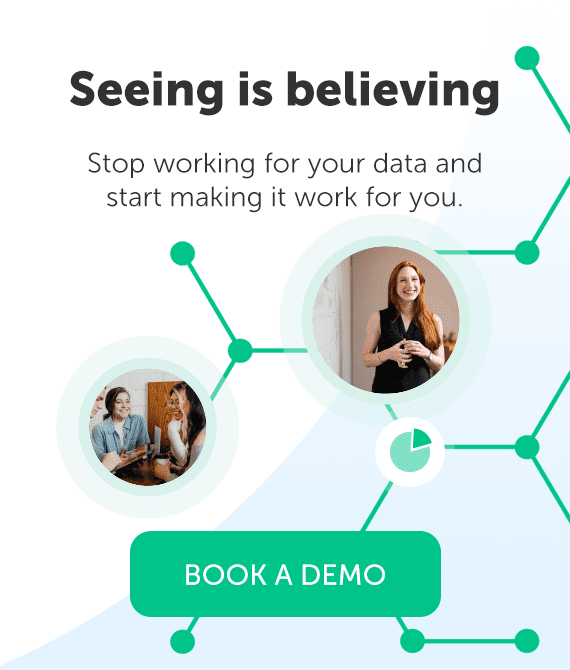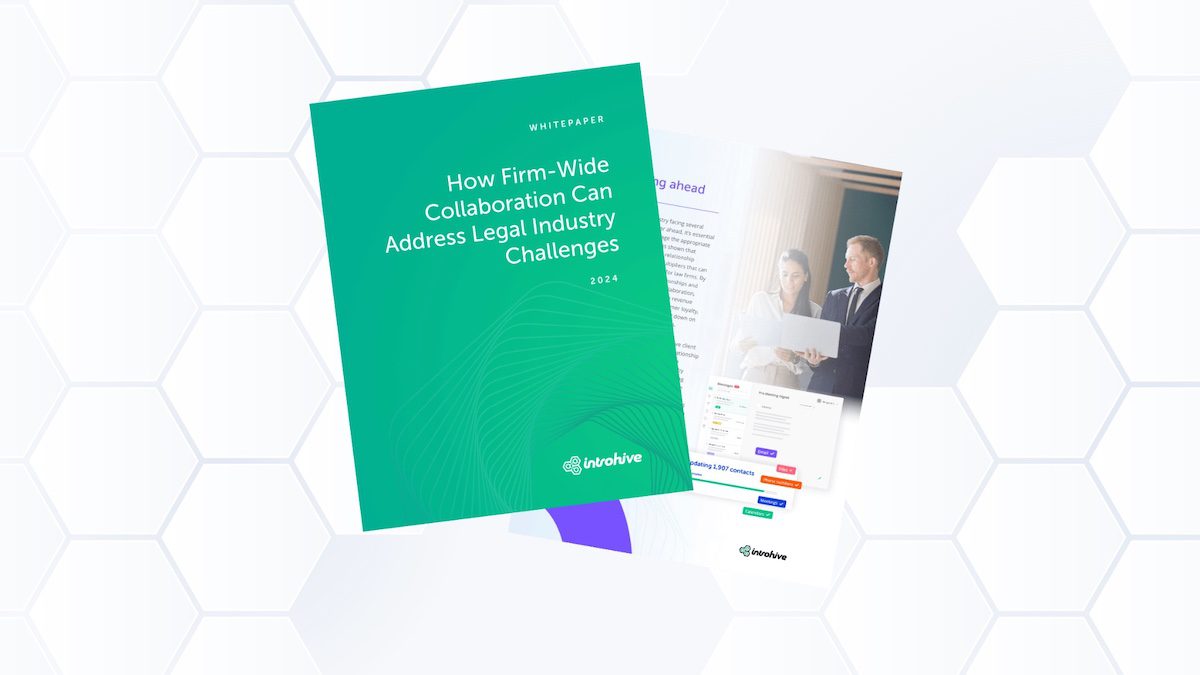CRM data migration, moving your information from one system to another, seems simple on the surface. It’s just a technical exercise of mapping and moving data from old fields to new fields, right? Not quite. In order for a new customer relationship management (CRM) to provide long-term business value, your IT team needs to handle a data migration with caution.
One of the first questions your team will need to ask is, which pieces of data will you transfer? Because you don’t want to muddle a new system with inaccurate, incomplete, or poor contact and account records that have been left untouched for years.

Data decay is a real issue. As much as 70 percent of records become inaccurate within a year in CRM. But on the flip side, skipping over important data can be just as damaging. So, it’s really a matter of strategic balance.
- Get Your Scope, Budget In Order
- Analyze Legacy Contacts
- Establish a Cut-off Date for Data, Records
- Prepare Legacy Data for Migration
- Import with Care
- Verify and Improve CRM Data After Migration
Figuring out the right data set to migrate to a new system will take a bit of finesse. The following six best practices can help your IT leaders take control and ensure your organization’s data is not only ready for migration, but positioned to empower data driven decisions post-migration that will ultimately help fuel company growth.
1. Get Your Scope, Budget In Order
The biggest oversight I see most often in CRM migration is underestimating the cost and time required for optimal integration. Organizations typically want to migrate everything. It’s the “better safe than sorry” mindset. But migrating everything isn’t ideal for two main reasons: complexity and cost.
The cost of migration is tied to the volume of data and, in many cases, migration costs can exceed the cost of the CRM itself. One of the contributing factors is the cost of additional data storage when moving to a cloud-based CRM.
The goal is to migrate the right amount of data needed to ensure optimal customer experience management, as well as ensuring your business development team has the insights they need to accelerate sales and revenue. Simply put, legacy data should only be imported if it supports future business objectives—something you’ll need to align with senior management and key internal stakeholders.
2. Analyze Legacy Contacts
A critical step in preparing for CRM data migration is evaluating legacy contacts and the associated data. Data hygiene is key; clean, streamlined data makes all the difference. So, work with primary users and stakeholders to review records for duplicates, new contact information, and errors.
The other area of focus should be evaluating how the information contained in the contact records supports business goals. Input from all stakeholders is key at this juncture. Some specific data fields to consider including:
- Customer groups: If your legacy CRM includes customer groups, are they used? Is it worth the effort of migrating these groups? Does the data have clean industry fields mapped for segmentation?
- Custom fields: Some custom fields may have long-term value while others may have been created for a campaign or a short-lived business objective. This is the time to figure out which content lives on.
- Redundant fields: Does your legacy data include repetitive groupings of fields? If the information is still relevant, take time to normalize the data. It takes time but it is worth it in the long-run.
- Notes: This field can often be a catch-all for everything from the contact’s favorite color to shipping notes. How much of this information is valuable? Should it be migrated?
Through this process, you will be able to identify what content is relevant to your data migration strategy. Document your full list of fields that are mission critical. You will also likely identify areas for improvement to implement in the new CRM.
3. Establish a Cut-off Date for Data, Records

Beyond evaluating the specific data fields for migration, it’s important to understand if all contacts and the associated data are still relevant.
Again, your colleagues across the organization should be able to provide valuable input to this process. Key factors to evaluate:
- Stale contacts: How long should a former customer or contact be kept in the system? At what point does it make sense to abandon an open lead? If a specific contact has been dormant in your CRM for over a year, you may want to evaluate the validity of that data record.
- Interaction history: What level of engagement detail does your company track for accounts and contacts? You’ll want to capture all activities including, meetings, tasks, emails, phone calls, transactions, web visits, mail merges, and marketing emails to measure engagement but it is also important for data privacy management.
Different companies have different needs for historical data. However, anything more than five years is likely excessive. Setting a cut-off date for contact details can be an excellent way to cut down on CRM bloat.
4. Preparing Legacy Data for Migration
Once you’ve finalized the data you will migrate, it’s time to prepare for the actual migration process. But before your organization starts diving into the refinement process, here are a few overarching adjustments that should be made to the data fields prior to importing it into the new CRM.
 Legacy ID: When it comes to data migration, it’s helpful to have a way to benchmark historical records. The easiest way to do this is to create a Custom Field for the Legacy ID for each record that you’re migrating. This makes it easier to look back at historical data models at a future time. Also, if a field was accidently deleted in the original import, you can update the imported data using the original data set.
Legacy ID: When it comes to data migration, it’s helpful to have a way to benchmark historical records. The easiest way to do this is to create a Custom Field for the Legacy ID for each record that you’re migrating. This makes it easier to look back at historical data models at a future time. Also, if a field was accidently deleted in the original import, you can update the imported data using the original data set.- Compound key for companies: Depending on the age of your legacy system, contacts from a single company may not be linked under a single, unifying account ID. If your legacy CRM is contact-centric instead of account-centric, it is recommended that you create a compound key based on portions of multiple data fields, such as the Company and Address fields. Grouping contact records by company makes it much easier to import data into newer CRM systems and ensure that contacts that belong together, stay together.
5. Import with Care
Unexpected things can happen in data migration. So, it can be helpful to start small and import a small subset of CRM data to test your import. A more cautious approach can save a lot of headaches in the clean-up process. And, as long as you set up a legacy ID, you will be able to easily add content skipped on the first import.
It is also advised to keep the old CRM system running in the short-term—usually about 6 months—in the event that there is a business need for legacy data omitted in the initial data migration.
6. Verify and Improve CRM Data After Migration
Despite the best planning, something always goes awry. So, after the data is migrated, do a final purge of the database to remove anything that’s old, inaccurate, duplicated, or irrelevant. But don’t stop there. CRM migration is a prime opportunity to streamline CRM data for improved business performance. It is also an ideal time to implement process changes to ensure that all your hard work is not undone by inevitable data decay.
Take time to fix the issues—data gaps, inconsistencies, redundancies—you identified during the migration process and communicate expectations to CRM users for data entry and maintenance.
Thankfully, new data enrichment software is making it a lot faster (and less painful) to complete contact records. By pulling in data from over a dozen touchpoints, AI-powered software like Introhive automatically adds missing data and flags duplicates for removal, freeing up an extra 5.5 hours of time each week for CRM users.
Get AI on Your Side for Painless CRM Migration
CRM data migration is simple in theory but quite nuanced in practice. For a successful project, carve out time with stakeholders early on to determine budget and scope, then work together to evaluate what data is critical to maintaining relationships and driving business success now and in the future.
At the end of the day, a strategic approach to a CRM data migration reduces headaches for your tech and IT teams, and ensures end-users have the data they need to maintain critical relationships and drive sales.
To learn how Introhive’s AI-powered data enrichment software can make your CRM migration a success, request a demo.






